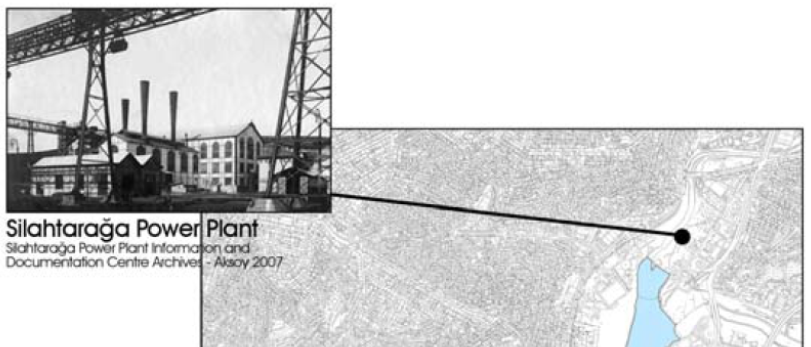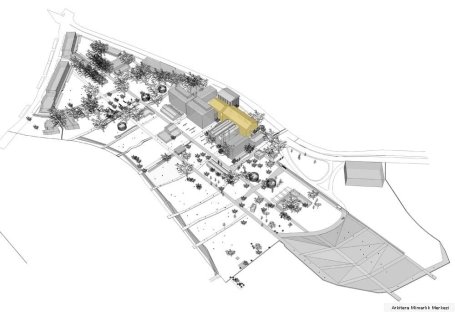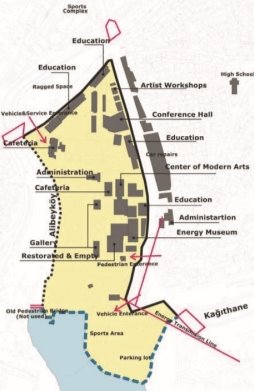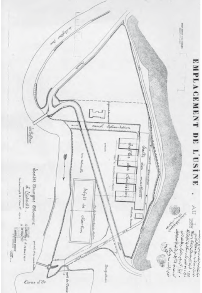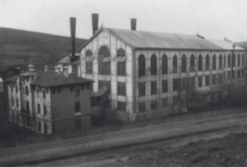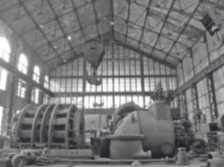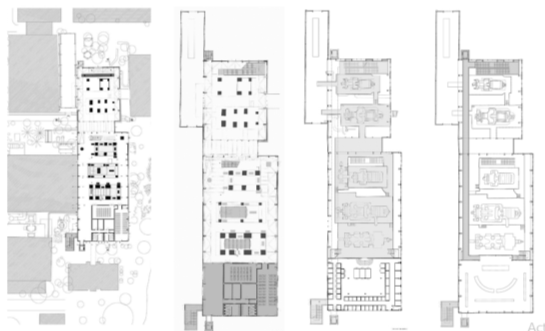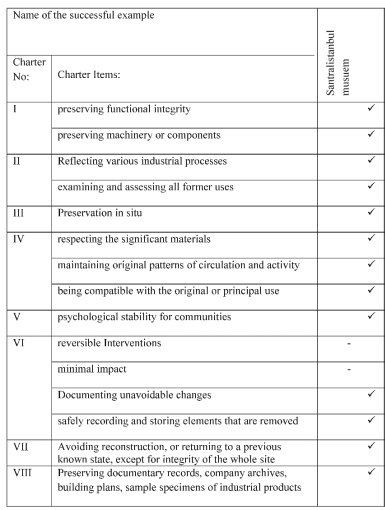1. Introduction
1.1. A History of the concept of Industrial Heritage
The idea of Industrial Heritage (IH) hosted for a first time in England in the middle of the 12th century, when several landscapes and industrial buildings were demolished (Kuhl, 2004). Then the idea of “heritage” traversed from the borders of the industrialized districts, by affecting from the past which is quite prominent to the present (Choay, 1992). From that time till contemporary era, there were many efforts and conferences to describe what it needs to do with conservation of industrial heritage. Considering Nizhny Tagil (NT) Charter “the industrial heritage consists of the remains of industrial culture which are of historical, technological, social, architectural or scientific value” (TICCIH, 2003).
According to Burley and Loures (2008) architectural heritage and landscape heritage are the center of social, cultural, unique spiritual values. In the past, there was different understanding in each generation it also derives new stimulation from it to build a capital in social contribution through the centuries (ECH, 1975). Selfslagh (2002) states that it is impossible to rebuild or renew the cultural heritage. The reason for that is no way to rebuild cultural heritages which already destroyed. Therefore, industrial heritage which is part of cultural heritage needs specific consideration to preserve by transforming its authenticity to our future generation. Cultural heritage as part of our past history, which belongs to our ancestors should be preserved. Industrial heritage which doesn't work anymore needs to preserve to get benefits from Initial capital for different purpose of social and capital activities. In this regard conservation of industrial heritage will be the best method to preserve in order to give sprite to the context.
2. Conservation of Industrial Heritage (CIH)
The idea of CIH started from 1950th century and introduced by Michael Rix (1955). Also the same discussion previously clarified in the 18th century with the concept of conservation on the architecture of the building production and equipment. In this regard, in Britain in 1973 there were first congers of CIH and also conservation of an industrial monument to evaluate and develop the historic culture and value of industrial heritage (Trinder, 1992). Consequently, the researchers from non-governmental organization established to focus on this subject. Right after Iron bridge congress (meeting) The International Committee for the Conservation of the Industrial Heritage which is known as TICCIH was founded. The international associations such as UNESCO and ICOMOS also established with the aim of conservation and specially by focusing of CIH. ICOMOS in his description of industrial heritage mentioned to social, cultural and technical values of industrial heritage considered as a complimentary part of collective memory for this reason it’s needed to preserve. The main aim of establishment of TICCIH was also to conserve industrial heritage (IH)
TICCIH was recognized in 1974 for preservation of artefacts and industrial heritage and artefacts by studying its educational, historical, scientific, and cultural values. Later, from 1970th the term IH have been used in Eastern European Countries. The term has been used in France with the title of Heritage. In Holland in the period of 1986 the collection center for international industrial was established. “The organizations regulations and the investigations were constituted in Scandinavian Countries” (Şimsek, 2006).
Considering the definition of IH in The Charter of Nizhny Tagil it refers to the conservation of objects and buildings as well as social services and production facilities (Nizhny Tagil Charter for the Industrial Heritage, 2003). In this regard, by considering intangible and tangible values in cultural heritage how to preserve and what we should preserve are the important questions which needed to be discussed. According to the Charter of Venice (1964) “It is vital that the principles guiding the preservation and restoration of ancient buildings should be agreed and be laid down on an international basis, with each country being responsible for applying the plan within the framework of its own culture and traditions.” In the conservation, industrial heritage the idea isn't also referring to objective adjustment and organization of places, but it also refers to idea of contribution of conservation by enhancing the sense of place.
After the introducing of the term “Sustainable development” the idea of conservation of industrial heritage developed to use the social, cultural, economical benefits of a site. Demolished cultural heritage might increase the rate of crime, it also creates lost space which people might lose social connection and vitality of space in that area.
According to the above discussion, it seems that the conservation of industrial heritage is mandatory which is parallel with the aim and objectives of sustainable development. In this regard, reuse of industrial heritage might be parallel to the aim of conservation. Following paragraph will describe the term reuse as a method for conservation of industrial heritage.
3. Adaptive Reuse as a part of conservation of Historic Buildings (HB)
Reuse of an industrial heritage in to new function will help to reduce sprawl reduction and land conservation. Turker (2013) believes that “reuse of HB will effect directly to community growth, their histories and leading to a minimal impact on the environment” (Turker, 2013). According to the literature studied in this research reusing of HB can be considered as a one of the best methods in preservation and conservation of HB in each and every context. According to Cascal (2007) after the process of reuse in HB, it will get the new sprit rather than demolishing or being left to decades.
During the process of reuse for HB to completely new function, the process of renovation will add new layers to the history of the building. But according to Bullen et al., (2006) it’s necessary mention that in the process of adding new functionality or layers to the HB the initial layers as an identity and history of the building should be preserved. It will also help to HB to keep its previous identity which belongs to certain period and time. Therefore, after reusing HB the sense of historical building still needs to be filled in reused building.
Consequently, according to Shipley (2006) reuse of HB is the most inventive and remarkable action which could be given to an old decaying HB. “The conservation process should maintain the cultural significance of a HB and interferences should be combined with the whole while, retaining its integrity and character” (Hurol et al., 2015).
Intervention in reusing the building for the new unction will need different methods by considering the environmental context of HB. In this regard the new intervention and facilities to HB should adopt slightly juxtapose with the identity and character of HB. According to Orbasli (2009) if the reused functional effect the identity of the building or completely changed the identity and character of HB we can say that the reuse is not appropriated.
Figure 1 which developed base on City of Petersburg City code (2007) reveals that reusing industrial building are appropriate with any kind of functions without residential. Since the scale of an industrial building is bigger that residential building it will create many problems in the context which completely will change the identity of HB.
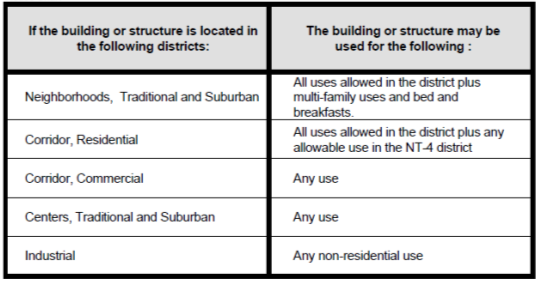
Figure 1. Chart of Reuse (City of Petersburg, City code, 2007).
According to Armesto González (2006) in order to reuse HB it needs suitable assessment of its context and situation of it in order to introduce a method of conservation to plan for its exploitation and recuperation.
In his research Fuentes (2010) proposed a method to reuse HB. He developed his method in six successive steps. The method which he developed is universal and could be applicable to different types of HB e.g. industrial, social, and residential and etc. Figure 2 illustrates the six main steps of assessing and documenting of HB.
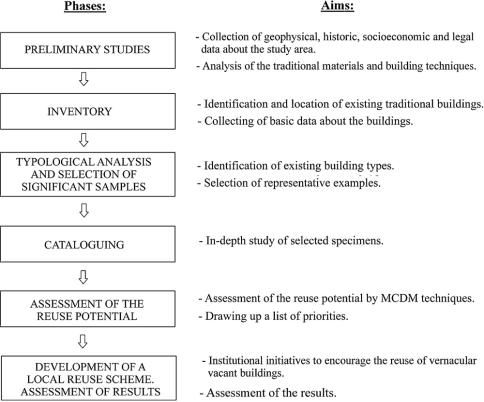
Figure 2. Process of documenting HB (Fuentes, 2010).
4. A study on international documents and charters and in the meaning of adaptive reuse
The origins of stabilising of awareness for international practice and codes for conservation starts from a conference in Athen in 1931 which organized by international museum office. The origins of Venice charter is rooted in Athens charter comes from the 2nd congress of architects and technicians of historic monument which held in Venice 1964.
International Council on Monuments and Sites is an association which works on technology, methodology, and theory of conservation of historic sites, historic areas and even historic buildings.
The idea of Venice charter taken in 1956 from International Council on Monuments and Sites (ICOMOS) is considered as one of the important charters of the conservation movement. It highlights the importance of context of the original context by documentation of any adjustment and by mentioning the importance of the new layer which add during the conservation process. Therefore, conservation in a way that to create socially useful environment in order to increase vitality of the context is the important concept in Venice charter. This charter forms the basic principles of conservation in contemporary approaches. On the official website of UNESCO all principals and roles in conservation regarding to Venice charter have been distributed.
The Florence Charter on Historic Gardens (1982) have been accepted by ICOMOS. The idea of developing a Florence Charter on Historic Gardens (FCHG) delivers the rules and principals of regeneration of historic garden and assessment of architectural building and landscape heritage.
The necessity of identifying, classifying and listing the historical gardens in order to prepare a context for philosophical guidance on conservation, maintenance and reconstruction and restoration. The principals for Florence Charter somehow following Venice Charter from the rules and principals of conservation point of view.Another charter CHTA[1] (1987) reflects comprehensive principals for protection and planning of historic urban areas.
In the 1990 there the charter for the Protection and Management of the Archaeological Heritage (CPMAH) have been established. The main aim of the charter was to consider: international cooperation, presentation, re-construction maintenance and conservation, legislation, survey in archaeological site and building and even industrial building. Consequently, in 1976 The Charter on Cultural Tourism tried to assess the negative and positive of cultural tourism on historic sites and monuments.
The Australian ICOMOS Charter known as The Burra Charter (1981) developed the rules and principals of Venice charter to be adoptable with local Australian supplies. The Burra Charter contains inclusive descriptions on rules of conservation and preservation. Place, maintenance, compatible use, adaptation, restoration and reconstruction. It also highlights the idea of cultural significance, the aesthetic of historical context, social and scientific values of the present, past and future generations. The Burra Charter is well established in Australia and is frequently used by the Australian Government in its formal capacity.
Another charter which is famous to New Zealand charter or charter for the Conservation of Places of Cultural Heritage Value prepare an opportunity to clarify the process of conservation to prepare principals to direct the conservation of historical context and buildings in New Zealand. Even the New Zealand charter follows in ides and rules of conservation from Venice Charter. The following paragraph prepares an opportunity to focus on the charters which were specially working with the idea of industrial heritage.
Considering the description and classification on conservation there are different charters which referring on conservation of IH.As Mannon (2004) Stated “As these industrial heritages are valuable and dealing specifically with buildings and artefacts of industry. There are different institutions have been emerged, working for keeping and protecting these IH.”
UNESCO, ICOMOS, ICCROM, TICCIH, and AIA are the institutes which are on the conservation and preservation of IH.
Table 1. Institutions Working on Conservation of Industrial Heritage (Developed by Author).
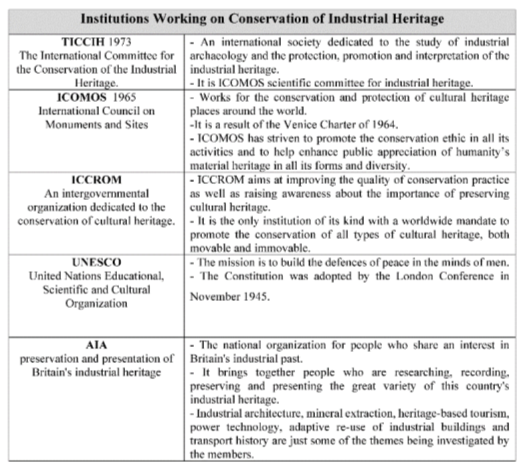
5. Museums and their contribution to development of cultural heritage
To understand and evaluate cultural identity and knowledge of our heritage museums play a significant role. ICOM[2] (2007) describes museums as “as a non-profitable, permanent institution which acquires, preserves, studies, exhibits and disseminates the intangible and tangible inheritance of manhood for regeneration study, regeneration purposes, education”.
Therefore, to find a way to transformation of values and by defining a knowledge in behind of heritage is the main aim of establishing a museum.
There are lots of methods to gain the main aim and objectives of establishing museums such as communication and information technology organization of exhibition spaces, educational actions, research tools. Designing a museum could be in such a way to organise either in open spaces or buildings. Therefore, based on the aim and objectives of each and every museums it can be organized and designed. Consequently, industrial building or even traditional residential building could also organize in such a way to define museums.
In designing a museum not only the mission of design important, but also it needs to consider to guaranty and consider the values and reservation techniques. Similarly, the protection of the construction should prevail above, the use of the museum with a particular aim.
In reusing a building for the museum we should also consider market value from the financial viewpoint. Therefore, aggregated value of the investment previously have been done.
Cultural heritage as a part of history which shows the culture and values of our traditional heritage needs somehow to preserve in such a way that to transform the cultural values from the past to the present and even for the future generation. In conservation of such building's reuse is the most important method. The reason for that refers to the already designed and constructed building infrastructure. Therefore, it also economically reasonable. The idea also can work in the revitalization of industrial heritage to increase the vitality and the liability of the context.
6. Case study
6.1. Golden Horn as an important industrial region of Istanbul
Until 1980s Golden Horn was vital industrial region, but after that there was some parallel process movement, such as deindustrialization and neo-liberalization the property renovation concept start to effect of the organization principals and the master plan of the city.
Golden Horn as one in the old manufacturing area was the main purpose of interfering. But nowadays the area by using new strategies, counting large and more scale private speculation.
The Golden Horn divides the European part of Istanbul into historical peninsula or the old center and Beyoğlu (Pera). (Yerliyurt and Hamamcioğlu, 2005).
From 1960s Golden Horn involved great industrial facilities and continued the process of industrialization by enticing small-scale manufactures till 1980s.
“The decentralization of the industrial landscape that took place late in the 20th century, along the shores of the Golden Horn and the valley beyond did not come about impulsively. Starting in the 1980s, industrial amenities were obligatory to abandon the Golden Horn and relocate to the margin of the city following new planning resolutions originating from İstanbul’s municipal authorities” (Yerliyurt and Hamamcioğlu, 2005).
As it is shown in figure 3 in the Golden Horn district, there are lots of industrial building which is valuable and counts as industrial heritage. Since basing on nowadays principals of urban development and master plan of Istanbul it is forbidden to build indusial manufactures in these districts therefore it’s not possible to use these buildings with the same function. Therefore, they are using some methods and techniques to revitalize the districts. One of the famous districts which have been successfully revitalized is Silahtaraga power plant in the golden horn district (figure 3). The following paragraph will explain how this area revitalized.
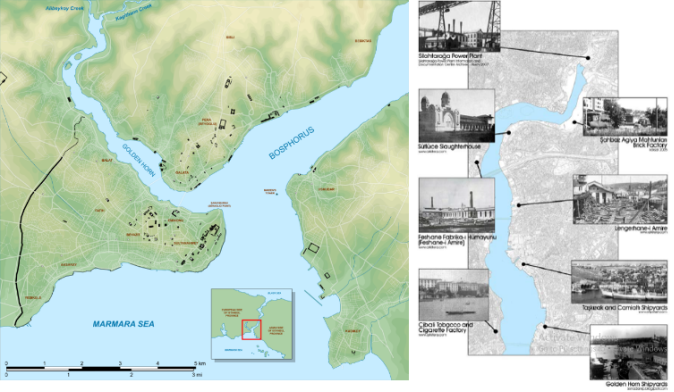
Figure 3. Golden Horn and important industrial districts (Aksoy, 2007).
